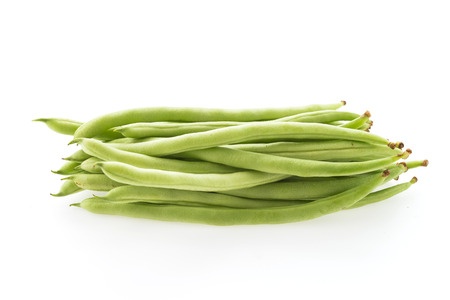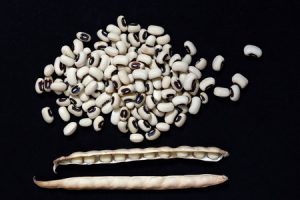
The Cowpea (Vigna unguiculata L. Walp)) is a critical legume for cattle fodder. It’s grown over much of dry Africa, Europe, Asia and the USA because of its high stress tolerance to heat and drought. It is an annual herbaceaous plant in the Fabaceae family which is ideal for growing in the savannahs and dry regions of the earth (Ehlers and Hall, 1997). The legume is grown primarily as a grain legume, vegetable and fodder crop.
As a feed material for both humans and livestock, it provides up to 26% protein by weight alongside many other vitamins and minerals. It is thought the African population will grow to 2.5 Billion people by 2050 which means alternatives to maize are sought. Cowpea along with other grain and pulse sources such as pigeon pea, finger millet, sorghum, pearl millet and red sorghum may be the way forward for feeding such a population.
Alternative Names For Cowpea
It is also known as Bachapin Bean, Southern Pea, Black Eyed Cowpea, Black Eyed Dolichos, Poona Pea, Black-Eyed Pea, Rope Bean, Black-Eyed Bean, Red Pea. China Bean, Marble Pea, Common Cowpea, Macassar Bean, Cowgram, Cowpea, Kafir Bean, Cultivated African Cowpea, Crowder Bean, Field Pea and Crowder Pea.
Appearance
Cowpeas are typically climbing or trailing vines that bear compound leaves with three leaflets. The white, purple, or pale-yellow flowers usually grow in pairs or threes at the ends of long stalks. The pods are long and cylindrical and can grow 20–30 cm (8–12 inches) long, depending on the cultivar.

Cultivation
The optimum temperature for growth is 30 °C (86 °F), making it a summer crop. Some varieties can grow at 25 °C but not very often any lower. It grows best in regions with an annual rainfall of only between 400–700 millimetres (16–28 in). The ideal soils are sandy and it has better tolerance for infertile or acid soils compared to other crops. The seed can be sown in soils containing up to 85% sand. It is ideal for nitrogen-fixing in soils as are all legumes.
Intercropping is a way of growing more than one species within a field containing other crops. As a legume it is ideal for this purpose.
Pests And Diseases
Over many years, varieties have been developed with a certain resistance to the following diseases such as bacterial blight (Xanthomonas campestris), cowpea aphid-borne mosaic virus (CABMV), cowpea aphid (Aphis craccivora), cowpea curculio (Chalcodermus aeneus), root-knot nematodes (Meloidogyne incognita and M. javanica), cowpea weevil (Callosobruchus maculatus) and the parasitic weeds Striga gesnerioides and Alectra vogelii.
Nutrition
| Protein | 24.8% |
| Fat | 1.9% |
| Fibre | 6.3% |
| Carbohydrate | 63.6% |
| Thiamine | 0.00074% |
| Riboflavin | 0.00042% |
| Niacin | 0.00281 |
Figures from Bressani, R. Chap. 28 in Cowpea Research, production and Utilization, Wiley & Sons.
Colour
It is also provides a rich source of colours. There appear to be many different phenotypes based on colour, and these were recently investigated for their proanthocyanidin (PA) composition by researchers in the Soil & Crop Sciences, and Nutrition & Food Science Departments at the Texas A&M University (Ojwang et al., 2013). They used normal-phase HPLC (High Performance Liquid Chromatography) and reversed-phase UPLC-TQD-MS (Ultra Performance Liquid Chromatography-Tandem Quadropole Detector-Mass Spectroscopy) to detect the proanthocyanidins. It builds on earlier published studies on the anthocyanins and flavonols (Ojwang et al., 2012). That paper identified 8 anthocyanins, 23 flavonols of which 15 were new to Cowpea. The most predominant were the mono-, di-, and tri(acyl) glycosides in certain phenotypes.
There are excellent literature reviews on Cowpea (Ehlers and Hall, 1997; Mokgope, 2007) covering its economic uses and research to date on its composition as part of a Ph.D. thesis on its use as an antioxidant protector for sunflower oil.
References
Mokgope, L.B. (2007) Cowpea seed coats and their extracts: Phenolic composition and use as antioxidants in sunflower oil. Ph. D Thesis. University of Pretoria.
Ojwang, L.O., Dykes, L., Awika, J. (2012) Ultra Performance Liquid Chromatography–Tandem Quadrupole Mass Spectrometry Profiling of Anthocyanins and Flavonols in Cowpea (Vigna unguiculata) of Varying Genotypes. J. Agric. Food Chem., 60 (14), pp 3735–3744 DOI: 10.1021/jf2052948
Ojwang, L.O., Yang, L., Awika, J. (2013) Proanthocyanidin profile of cowpea (Vigna unguiculata) reveals catechin-O-glucoside as the dominant compound. Food Chem., 139 (1-4) pp. 35-43
Internet sources: Cowpea http://www.iita.org/cowpea
Leave a Reply